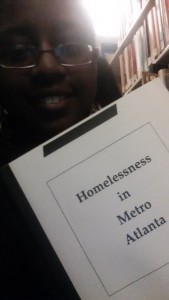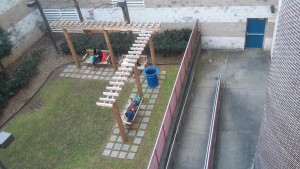“Ethics of Collecting Sources and Assets”- Things to Think About When Doing Research
- Copyright

- pay attention to the copy rights because of the background info of the source.
- Make sure you cite your sources
- Fair-use
- Not taking everything from the source
- Using the source for the purpose of gaining information
- Permission
- Make sure you can use the source
- Contact the person that has provided the source to make sure you can use it
- Taking pictures of people
- Make sure you have their consent
- Make sure you can use the source
- Creative Commons
- Non-profit organization that gives authors control over how their work is used
- It also lets you license your own work after you have completed a project
Source: Arola, Kristin L., Cheryl E. Ball, and Jennifer Sheppard. Writer/designer: A guide to making multi-modal projects. Macmillan Higher Education, 2014.
BY: Destiny, Nancy, and Shakira
Key Word Search Terms
- GSU Library Database: from (library.gsu.edu)
- Google Scholar: from (http://www.lib.vt.edu/libnews/2012/2012-06-07.html)
Here are some of the key words I used to search in the library database and Google Scholar:
- “Woodruff park” and “history
- “Woodruff park” and “homeless”
- “Homeless in Atlanta” and “Woodruff Park”
- “Homeless in urban parks”
Library Resources
Built Environment Observation Activity
|
Objective (Describes experience) |
Subjective (Thoughts, analysis, interpretation) |
| 3 Swings (wooden) | Makes more people want to sit in the area |
| 2-seater swings | Friends have enough room to sit together |
| It is located in a corner space | It’s cozy even though it’s outside |
| Grass | It was muddy |
| Square tiles in the ground near the swings | It would be a good place to put your feet when the grass is muddy after the rain |
| Trees nearby | To provide shade |
| Hooks on the swing poles | Maybe to hang bags (two students that were there used the hooks for that) |
| Bridge connecting Student Center East and Urban Life | — |
| Drain in the ground nearby | Good for when it rains |
| 3 light poles | Useful at night to keep the area well lit |
| Swings held up by chains | So that the swings can hold the weight of two people |
| Smells like grass | Not a good or bad smell |
| Sound of vent blowing | I liked to have some type of noise in the background and not just silence |
| Vents | — |
| 2 students talking | It’s a nice place to talk and relax with friends |
Schindler’s “Architectural Exclusion”
What Does It Mean?
3.) “Architectural regulation is powerful in part because it is unseen’ it allows government to shape our actions without our perceiving that our experience has been deliberately shaped” (1940)
- The reason that architectural exclusion is powerful is because the government is able to control our actions without us being aware that they are doing it.
7.)”…’there is no such thing as a neutral design” (1948)
- Every design is made a certain way for a reason
18.) “..the design of many suburban communities, with their cul-de-sacs and curvy streets, makes them confusing to outsiders who can not see what lies on the other side of the neighborhood. This street layout also gives non-residents fewer reasons to enter the neighborhood in the first place; the multiple dead end streets and cul-de-sacs of a suburban neighborhood often all branch off a single arterial road” (1972).
- The design of cul-de-sacs are used to hide was is the other side of the neighborhood from non-residents and with the purpose of discouraging them from entering by making the streets in it confusing and complicated.
Syllabus Quiz
Questions:
What are the major projects? In a bulleted list, provide links to the project descriptions for each of them.
- Reading Summaries (6) http://spaceplacerhet.pdarrington.net/projects-2/#readingsummaries|0
- Annotated Bibliography (10 annotations) http://spaceplacerhet.pdarrington.net/projects-2/#readingsummaries|0||annotatedbibs|0
- Built Environment Descriptions (3, one each for exterior, interior, and digital) http://spaceplacerhet.pdarrington.net/projects-2/#readingsummaries|0||annotatedbibs|0||bedescriptions|0
- Built Environment Analysis (1) http://spaceplacerhet.pdarrington.net/projects-2/#readingsummaries|0||annotatedbibs|0||bedescriptions|0||beanalysis|0
How will your final grade be calculated?
- The grade is calculated based on the point system. You can earn points for everything you do. there is a minimum of 2500 points to get an A in the class
What is the “submission form” and how do you use it?
- It is the form used for turning in work to receive points
Embed the form below your answer (hint: Google “embed Google form” to find out how).
Embed the course calendar and weekly overview below this question.
Where on the course website can you find an overview of what’s due and the readings for each unit?
- Go to the Syllabus and course info tab and click on unit overview
What is the best way to see an overview of what’s due each week?
- The course calendar
What is the attendance policy?
- You earn 20 points for coming to class and lose 20 points for unexcused absences
What are my office hours, and how do you make an appointment to see me outside of class?
- Tuesdays 9:30-11:30 a.m., and by appointment
How do you earn participation credit? Provide a link to the instructions/guidelines for particiption.
- By doing the major projects, coming to class prepared, and missing only 4 class meeting. Also any other extra work that you do can be submitted for points.
- Participation (link to instructions)
How many points can you earn by participating in or organizing a study group session?
- up to 25 points
How can you be assured of earning an “A” in this course?
- Accruing 2,500 points
What are the minimum requirements for earning a passing grade of “C”?
- If you complete all the major projects, earing at least the minimum amount of points
What do you do if you’re not sure how to document your participation in order to earn points?
- You can request to meet with the instructor





